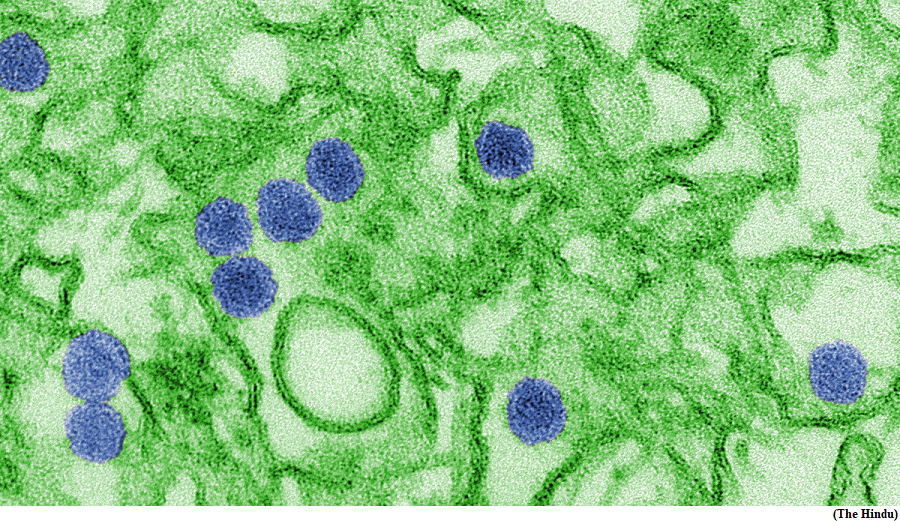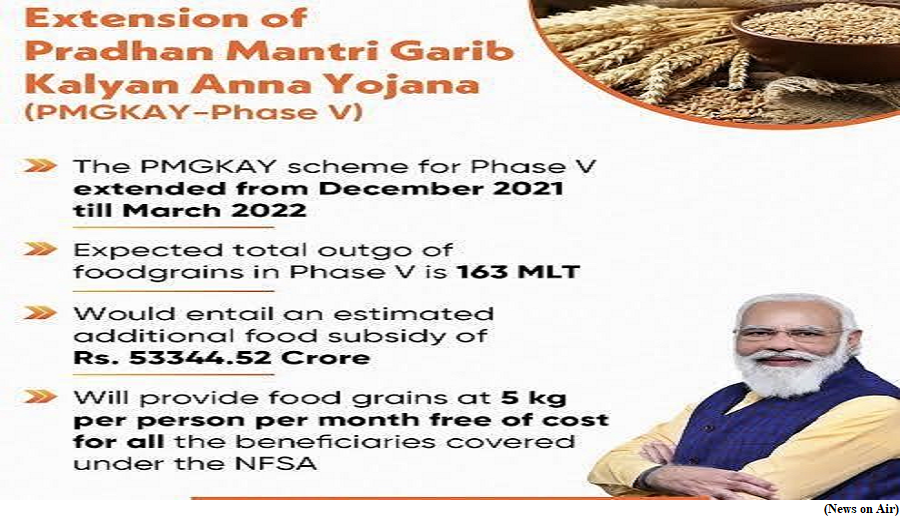The Zika genome and insights into the era of emerging outbreaks (GS Paper 2, Health)

Context:
- The dengue virus and the Zika virus, together infect up to around 400 million people every year.
- The Zika virus and genomic studies of it have opened fascinating windows into our knowledge of the infectious disease and its relevance in the context of emerging outbreaks.
About Zika:
- The Zika virus is a mosquito-borne flavivirus. Most infections in humans are asymptomatic or with mild symptoms, including fever, rash, and joint pain.
- The diagnosis of a Zika virus infection is mostly through genetic testing. An antibody-based test would be complicated because antibodies produced by the infection can cross-react with those of the dengue (DENV), yellow fever, and West Nile viruses.
- Researchers isolated the virus in 1947 from monkeys from the Zika forest in Uganda. The first human cases were detected in 1952 in Uganda and Tanzania. There have since been multiple outbreaks around the world, but largely confined to the tropics.
Zika virus’s genome:
- A significant number of insights have come from the Zika virus’s genome. Researchers sequenced the complete genome first in 2007.
- It has more than 10,000 bases of single-stranded RNA. The genome is also peculiar: it encodes for a large polyprotein, which is further cleaved into capsid, membrane precursor (prM), envelope, and seven non-structural proteins.
- Genomic studies have suggested that the Zika virus has two lineages: African and Asian. The lineage that wreaked havoc in the Americas is a sub-lineage with genomes similar to those of isolates from an outbreak in French Polynesia in 2013-2014.
- In a significant example of the usefulness of genetic surveillance plus sequencing, researchers in the U.S. used active surveillance of travellers to uncover a hidden outbreak in Cuba, and also established its time characteristics.
Zika and microcephaly:
- The small heads of children born to infected mothers has been one of the more alarming complications of a Zika virus infection.
- Earlier, based on studies with mice, researchers had suggested that a mutation in one of the precursor membrane proteins, called prM, of the Zika virus was associated with microcephaly.
- Researchers also suspected that this mutation originated during the outbreak in French Polynesia in 2013 before breaking out in South America, causing microcephaly.
- The Zika-microcephaly hypothesis also suffered when researchers recorded microcephaly in Thailand following infections of the Asian lineage of the Zika virus that lacked the mutation. Differences in the prevalence of microcephaly across geographical areas in Brazil also suggested that scientists’ picture is incomplete.
Specific microbes:
- Zika virus and DENV infections are interesting in their own right.
- Researchers in Tsinghua University, suggested in a recent study that infections of two viruses in primates encourage specific microbes to grow on the skin by suppressing an antimicrobial peptide, RELM, on the skin.
- These microbes produce acetophenones, which are volatile molecules that could provide a chemical cue to mosquitoes, attracting them towards the individual and supporting forward transmission of the viruses.
- The researchers also reported that administering isotretinoin could upregulate RELM and reverse this phenomenon.
Way Forward:
- As climate change helps drive the spread of vector borne diseases, and global warming brings environmental conditions that favour them to new places, our genomic technologies and such deep insights into the molecular pathogenesis of these viruses will be an important guiding light.
India to bring in a National Security Strategy
(GS Paper 3, Internal Security)
Why in news?
- After years of deliberations in the military and strategic community, India has kickstarted the process of bringing in a National Security Strategy.
- The National Security Council Secretariat (NSCS) is in the process of collating inputs from several Central ministries and departments to stitch together the draft of the strategy before seeking the final cabinet approval for it.

What is a National Security Strategy?
- A National Security Strategy document outlines the country’s security objectives, and the ways to be adopted to achieve these.
- Updated periodically, it defines traditional, non-traditional threats and opportunities while introducing accountability of agencies tasked with the implementation of such responsibilities.
- A national security strategy would guide the military as well as critical defence and security reforms with strategic implications, providing a holistic view of the overall national security, the threats and the roadmap to address them.
- The exact contours of the strategy being drafted is not known, but it will likely include the entire range of newer challenges and modern threats facing India, including non-traditional ones such as financial and economic security, food and energy security, information warfare, vulnerabilities in India’s critical information infrastructure, as well as those associated with supply chains and environment.
Which countries have a National Security Strategy?
- Most developed countries with an advanced military and security infrastructure have a National Security Strategy in place, updated from time to time. The US, the UK and Russia have published national security strategies.
- China also has such a strategy in place, called the Comprehensive National Security, which is closely tied to its governance structure.
- Pakistan, too, has brought out a National Security Policy 2022-2026, underlining its national security objectives and priority areas.
Need for a National Security Strategy:
- A National Security Strategy for India has figured multiple times in military discourses and has long been discussed in the strategic community, but has failed to see the light of day despite three past attempts.
- The complex nature of the various traditional and non-traditional threats, especially when rising geopolitical tensions have given way to uncertainties, urgency was felt to draft a national security strategy.
- Only political direction to the Armed Forces in existence is Raksha Mantri’s operational Directive of 2009.
- Some experts have highlighted that major military reforms should ideally flow from a national security strategy.
Why did India never have a national security strategy?
- There have been varying views in the strategic community in the past over why India has not brought out a national security strategy—from lack of a cohesive, whole-of-government effort, to the government deliberately not making public its national security objectives.
PMGKAY extended
(GS Paper 3, Economy)
Why in news?
- Prime Minister recently announced the extension of the Pradhan Mantri Garib Kalyan Ann Yojana (PMGKAY) while addressing a rally in Durg, Chhattisgarh.
- At the beginning of 2023, the scheme had been extended for one year, which will end on December 31. He ensured the scheme will continue for another five years.

What is the Pradhan Mantri Garib Kalyan Ann Yojana (PMGKAY)?
- Pradhan Mantri Garib Ann Yojana (PMGAY), also known as the Pradhan Mantri Garib Kalyan Ann Yojana (PMGKAY), is an initiative through which eligible beneficiaries receive a fixed quantity of food grains, such as rice and wheat, at a nominal price.
- The scheme was launched in April 2020 as a part of the Atmanirbhar Bharat initiative envisioned by PM Modi, aimed to help around 800 million impoverished people.
- Under the PM-GKAY scheme, the government provides 5 kg of free food grains every month to eligible beneficiaries.
- This assistance is in addition to the subsidised ration provided under the National Food Security Act (NFSA), allowing families covered under the Public Distribution System (PDS) to access essential food items at a nominal cost ranging from Rs 1 to Rs 3 per kilogram.
Pradhan Mantri Garib Kalyan Package (PMGKP) vs PMGKAY
- The Pradhan Mantri Garib Kalyan Package (PMGKP) was introduced in the wake of the Covid-19 pandemic to provide economic relief to the vulnerable sections of society.
- Launched in March 2020, the scheme included various measures such as free food grains, cash transfers, and insurance coverage for healthcare workers, among others, to support those affected by the pandemic and the subsequent lockdown measures.
- The insurance scheme under PMGKP covered Rs 50 lakh per health worker fighting Covid-19. This insurance scheme was further extended by 180 days in April 2022.
The cost of PMGKAY:
- According to the Ministry of Women and Child Development, between financial years 2020-22, approximately 111.8 million metric tonnes of food grains were allocated, amounting to a planned financial outlay of Rs 3.91 trillion. This covered phases I to VII of the scheme over the span of 28 months.
- As of January 1, 2023, PMGKAY was extended for another year, with an estimated expenditure of Rs 2 trillion, making it one of the largest food security programmes in the world.
What is the NFSA Act?
- The National Food Security Act 2013, also known as the Right to Food Act, aims to provide subsidised food grains for approximately 67 per cent or two-thirds of India's population.
- It was signed into law on September 12, 2013, retroactive to July 5, 2013, under Prime Minister Manmohan Singh's Congress-led UPA Government.
- The midday meal scheme, Public Distribution System, and maternity entitlements, among other initiatives, fall under this Act.
Integrating PMGKAY and NFSA
- In January 2023, the government approved the integration of PM-GKAY benefits with the provisions of the NFSA Act.
- This integration will streamline the delivery of free food grains. It also ensures that families falling under the Antyodaya Ann Yojana (AAY) and priority households (PHH) categories receive free food grains according to their entitlement under NFSA.
- For the financial year 2023-24, the central government has allocated around 60 mt of foodgrain under the NFSA. This includes around 40 mt of rice, 19 mt of wheat, and 1 mt of coarse grains.
- The central issue price (CIP), the rate at which grains are made available to NFSA beneficiaries, is Rs 3 per kg for rice, Rs 2 per kg for wheat, and Rs 1 per kg for coarse cereals.
Who is eligible for the scheme?
- Families eligible for PM-GKAY include those under the AAY and PHH categories. PHH beneficiaries are identified by state governments and Union territory administrations based on their specific criteria. This ensures that households in most need receive the necessary support.
- AAY families, comprising widows, terminally ill persons, disabled individuals, elderly individuals without means of subsistence or societal support, primitive tribal households, and various vulnerable categories, are also eligible for the scheme.
- To avail of these benefits, eligible individuals need to visit their nearest fair price shop and provide their ration card number or Aadhaar number for authentication. Aadhaar authentication can be done through fingerprints or iris-based identification.




